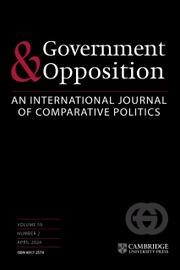Judicial Review in Norway
Outside the United States, Norway's 1814 constitution is the oldest still in force. Constitutional judicial review has been a part of Norwegian court decision-making for most of these 200 years. Since the 1990s, Norway has also exercised review under the European Convention of Human Rights (ECHR). Judicial review of legislation can be controversial: having unelected judges overruling popularly elected majorities seems undemocratic. Yet Norway remains one of the most democratic countries in the world. How does Norway manage the balance between democracy and judicial oversight? Author Anine Kierulf tells the story of Norwegian constitutionalism from 1814 until today through the lens of judicial review debates and cases. This study adds important insights into the social and political justifications for an active judicial review component in a constitutional democracy. Anine Kierulf argues that the Norwegian model of judicial review provides a useful perspective on the dichotomy of American and European constitutionalism.
- Provides a new perspective for comparative constitutional research
- Takes an unusual view of judicial review, connecting international and national judicialization
- Argues that the Norwegian constitutional development is a middle way between US and European constitutionalism
Reviews & endorsements
‘Brilliant and comprehensive, Judicial Review in Norway is a major contribution to constitutional theory. … Kierulf has a terrific understanding of democratic theory and constitutionalism, and her analysis of Norwegian constitutional law tells us a great deal about both. A tremendous achievement.' Cass R. Sunstein, Robert Walmsley University Professor, Harvard University
‘The Norwegian Supreme Court acted in the 1800s as a European pioneer of judicial review, and the Parliament of 2015 incorporated the principle into the written Constitution. This penetrating analysis of the bicentennial road, by a brilliant young legal thinker, should be a classic in the literature on a burning issue in democratic societies.' Carsten Smith, former President of the Supreme Court of Norway
'This impressive book answers some of the questions I had all along. The relationship between democracy and the rule of law is a debate that is very much at the center of German constitutional discourse, particularly at a time in which constitutional review has come under severe stress not only in Eastern Europe but also the United States.' Andreas Paulus, Institute of International and European Law
Product details
August 2019Paperback
9781108445429
342 pages
230 × 152 × 20 mm
0.5kg
Available
Table of Contents
- 1. Introduction
- 1.1. Background and context
- 1.2. Norway in a nutshell
- 1.3. Review under the constitution – and the ECHR
- 1.4. Book structure and terminology
- 2. Legal foundations and doctrinal specifics
- 2.1. Introduction
- 2.2. The Norwegian Supreme Court
- 2.3. The form of and basis for constitutional review
- 2.4. The basis for ECHR review
- 3. Foundations reviewed: the formative 1800s
- 3.1. Outline of a nation constituted
- 3.2. Courts, lawyers and background for judicial review
- 3.3. On not losing sight of (some) individuals
- 3.4. Review discussions prior to the 1866 case
- 3.5. The 1866 case
- 3.6. Arguments following 1866
- 3.7. Liberal constitutionalism defined
- 4. The emerging regulatory state and a constitutional watershed (early 1900s)
- 4.1. Constitutional questions arising – and discussed
- 4.2. The waterfall case
- 4.3. Legal opinions of 1912 and 1916
- 4.4. Legal opinions following the 1918 case
- 4.5. Parliamentary debates on review abolishment
- 4.6. Constitutional case adjourned
- 5. Post-WWII: social democratic constitutionalism?:
- 5.1. Introduction: review revival
- 5.2. Occupation and post-war adjudication
- 5.3. Regulatory reconstruction
- 5.4. Law, politics and history
- 5.5. Conquer and divide – preparing the expropriation statute
- 5.6. The Kløfta case
- 5.7. Kløfta case follow-up
- 5.8. Judicial review confirmed
- 6. Debates of ECHR review (1950–2000)
- 6.1. Introduction
- 6.2. 'Original intent'
- 6.3. On ECHR review prior to the HRA – the doctrine of clarity
- 6.4. Preparations for the human rights act of 1999
- 6.5. The power and democracy project
- 6.6. Post-national constitutionalism?
- 7. Dual review expressed (2000–2010)
- 7.1. Basis and case selection
- 7.2. Speech vs personality rights: reputation
- 7.3. Speech vs policy: political advertising
- 7.4. Free speech review: a synthesis of ideals?
- 8. A triple constitutional review revival:
- 2010
- 8.1. Prelude
- 8.2. 2010 Cases
- 8.3. 2010 Cases Debate and Follow up
- 8.4. Constitutional review reflections
- 9. 2014–2015: rights reform – and judicial review constitutionalization
- 9.1. The 2014 Constitutional Reform
- 9.2. Judicial review constitutionalization
- 9.3. Constitutional revitalization
- 9.4. Dual review constitutionalized
- 10. Looking back – and forward:
- 10.1. Legitimacy ideals disentangled
- 10.2. Political review challenges
- 10.3. Judicial review challenges
- 10.4. A bicentennial debate.

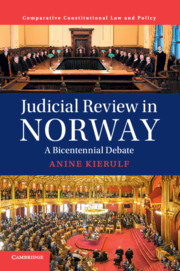
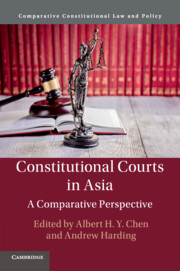
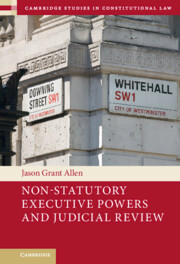
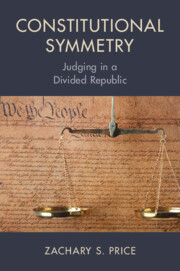
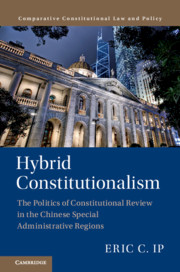

.jpg)

